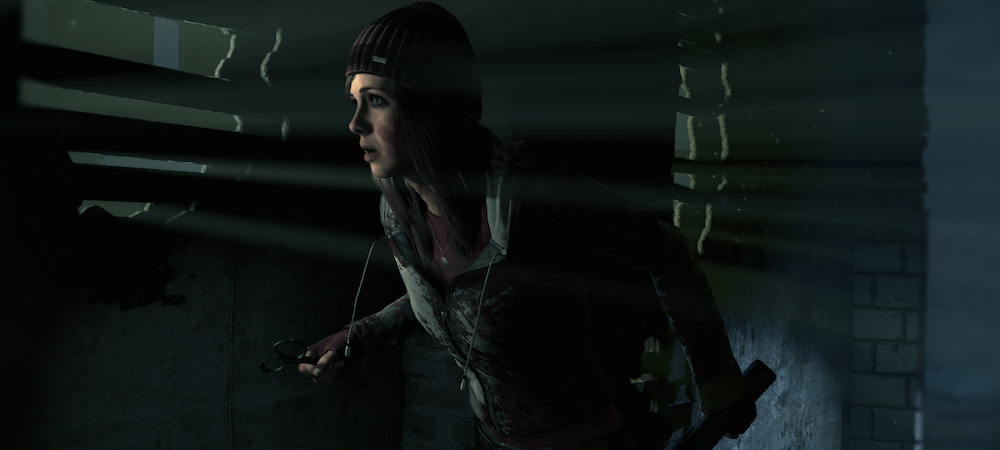It’s all about the butterfly effect
I am a little baby when it comes to horror movies. I just can’t. I can’t sit and force myself to stare at a screen that will make me scream and flinch. That’s not fun to me! The opposite is true when it comes to horror videogames for some weird reason. I love them, though I’m still a baby that screams at them.
Until Dawn seems like a perfect marriage of horror films and horror games. The Hollywood talent is providing stellar acting, while you have full control over what’s going on within the game. The big driving force behind Until Dawn is the butterfly effect of chaos theory. All your choices will have consequences that alter how the story unfolds in a variety of ways.
Until Dawn (PlayStation 4)
Developer: Supermassive Games
Publisher: Sony
Release: 2015
The story sees eight friends trapped together while a killer is on the loose. Anyone and everyone can die, and you can end the game with maybe just one friend, or if you’re really good all of your friends. One playthrough will take roughly 10 hours and there’s going to be a lot of replayability here.
My hands-on demo began as a male and female character were looking for one of their lost friends. Controls are extremely simple as you move with the left stick, adjust the camera in small ways with the right stick, and your main character’s flashlight is controlled by the motion controls on the controller. X and R2 were also used to interact with various objects.

The core tenants of horror are present in Until Dawn, and tons of spooky stuff was happening. Ghosts were walking around, there were a ton of bloodied weapons laying about, and just a lot of general weirdness was happening to scare the characters, and potentially the player too.
One thing that helped set the tension was the fixed camera angles. A lot of the rooms had the camera fixed in a certain position, and it reminded me a lot of the original Resident Evil games.
From the objects you find to the decisions you make, your game will be altered in many different ways. Every time you make a choice that matters you’ll see a little butterfly appear in the user interface to indicate your story’s trajectory has been altered.
At one point I picked up a pair of scissors and used it as a self defense mechanism against the killer. You don’t have to take the scissors, though. Whatever you decide will matter down the road in some form or another. The immediate actions of my decision here though meant I was able to stab the killer, but he was able to knock me out regardless. Perhaps the wound I gave the killer will come back to save me down the line?

Choices like in The Walking Dead will happen here too. At one point, I had the option of exploring another room or following my friend into a room they were trying to get into. At the end of the demo, the two characters were tied down to chairs with giant chainsaw blades coming down towards them. At that moment I had to choose between shooting myself or my friend.
While there’s a lot of choices in your action, the overall level design of this particular area felt like it was just driving me forward on a set path. There were some minor puzzles to solve, but nothing all that challenging. I hope there’s more to the exploration than what was on offer here.

The atmosphere is one thing, but the acting and motion-capture work is what really sold me on Until Dawn. I felt fully immersed and could really feel my heart beating faster. I’m so glad the game moved away from its original campy vision.
“Originally it was more of a Move-focused game for the PS3,” associate producer Vicky Miller told Destructoid. “It was very much a really campy teen horror geared towards a more young audience. When the decision was made to bring it on to PS4, we really wanted a more mature feel to the game [as] the audience is different.
“We brought in the Hollywood horror directors, Larry Fessenden and Graham Reznick, and they worked with higher caliber talent like Hayden Panettiere. We did full performance capture, and really focused on making it more of a true horror game. Where you have suspense, terror, there’s mystery, there’s moral dilemmas that you have to face to kind of give this very immersive horror experience that you’re actually participating in.”
Visually the game was looking just fantastic. It’s the Killzone: Shadow Fall engine and developer Supermassive Games has worked with Guerrilla in the past on Killzone. So the team knows how to use the engine to best fit its vision.
Horror games are on the rise again this generation, and I’m glad we’re getting a different take on the genre with what Until Dawn is trying to accomplish.








